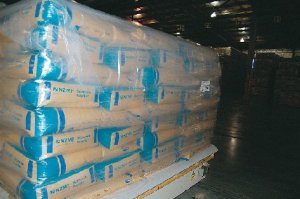“It was certainly a positive overall outcome but there were some mixed messages,” Rabobank senior dairy analyst Hayley Moynihan told Dairy News.
“There was a strong rebound in skim milk powder and AMF but whole milk powder was lacklustre by comparison.”
Anhydrous milk fat (AMF) rose 24.4% averaged across the now monthly contract positions, lead by a 43.6% lift in the price for August delivery to US$3393/t, while the December contract was up just 5.1% at US$2,860/t.
Skim milk powder (SMP) was similarly at a premium in the near positions, rising 28.4% to average US$3135/t for August, but only $2724/t for November (there was no December offering) while WMP was up 12.3% at US$2784/t in August, and 7.4% at US$2939/t for December.
“What we can take from that is buyers probably had to come back to cover their short-term needs but are still reasonably cautious about the global economy and are not keen to purchase too far forward.”
Moynihan notes SMP monthly averages hide “quite a large variance” between New Zealand product and US (Dairy America) or European (Arla). For August delivery, the latter’s medium heat product made just US$2605/t; Dairy America’s was US$2750/t, and Fonterra’s US$3535/t.
“Some of it is because of different product specifications but it appears some purchasers prefer a particular product either because of its origin or the company.”
Even prior to last week’s auction there were signs dairy prices were stabilising in northern hemisphere markets and while there’s a limit to how much should be read into one auction, “put it all together and one conclusion is it’s either the bottom of the trough, or certainly very close to it and we would expect to see prices start to improve or at least plateau from here,” she says.
Volume offered at last week’s auction, a maximum of 29,515t, was back 26% on the previous sale’s 40,150t when prices overall fell 6%.
Also on the supply side, Moynihan notes growth in US production has slowed and, after a strong start to the season, Europe has passed its peak. That surge in northern hemisphere production, colliding with the tail end of a bumper season here, is what had been pressuring markets.
BNZ senior economist Craig Ebert says this latest GDT result will “calm a lot of nerves”.
“It doesn’t mean we’re out of the woods yet but it’s certainly a relief.”
That relief comes not only from the dairy market’s rebound, but the New Zealand dollar’s recent easing, given it had been defying gravity in the face of falling commodity markets up to about mid April. Continuing – and in some cases increasing – economic difficulties around the world mean the fact GDT prices went up at all is “really encouraging,” he adds.
















